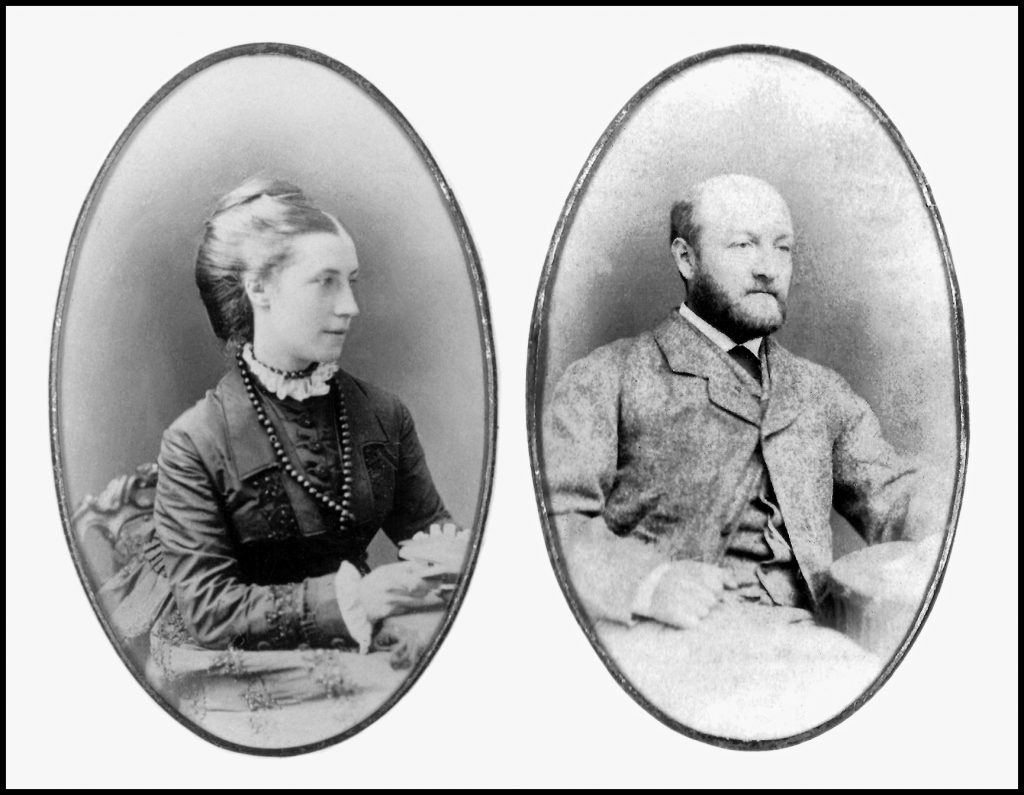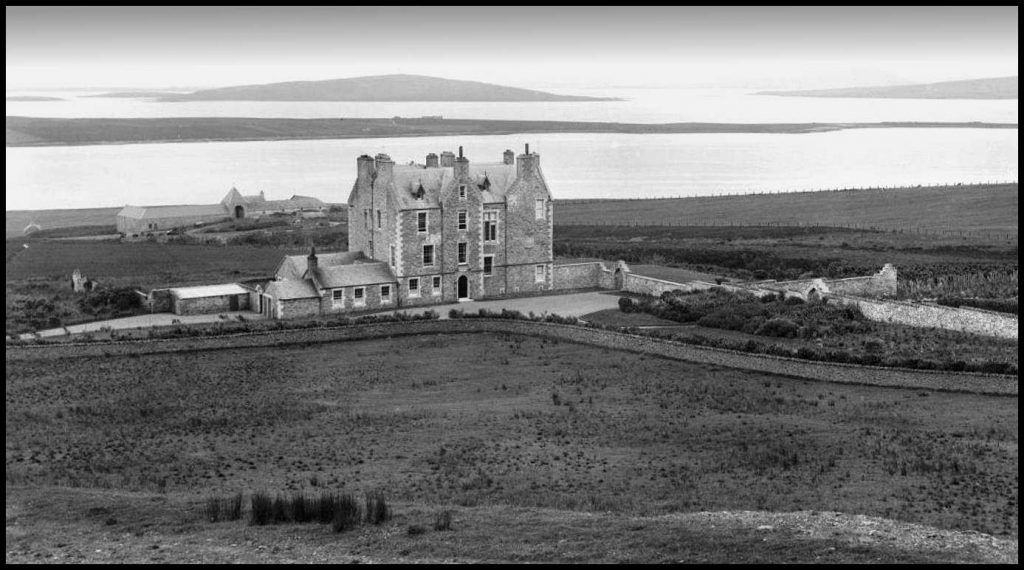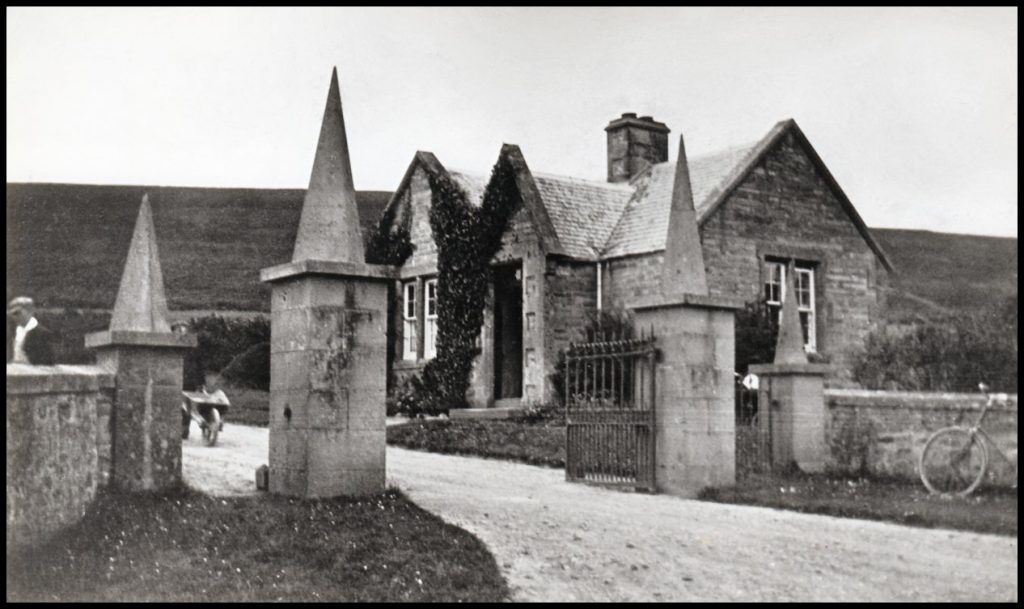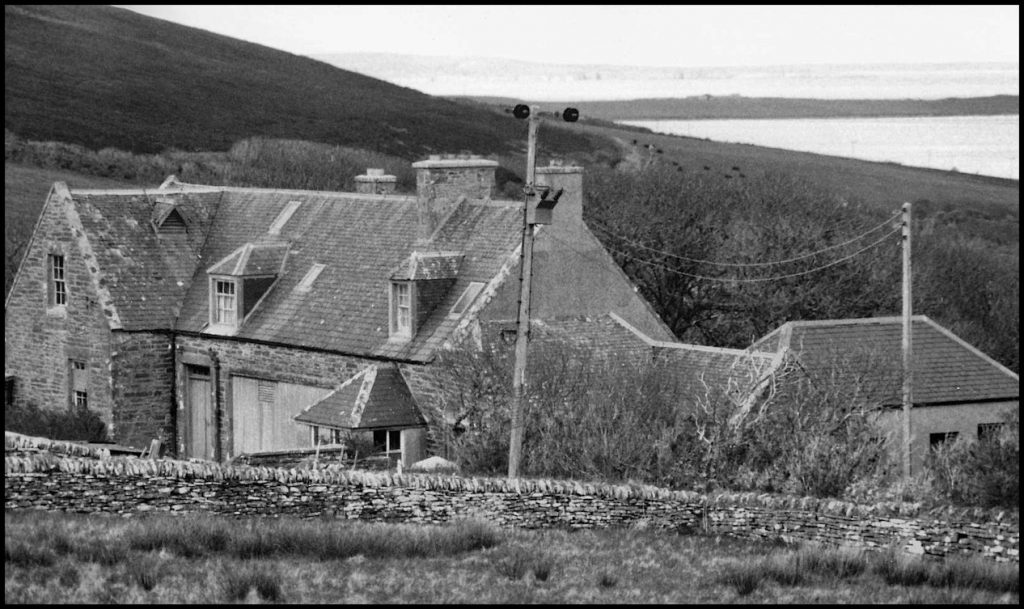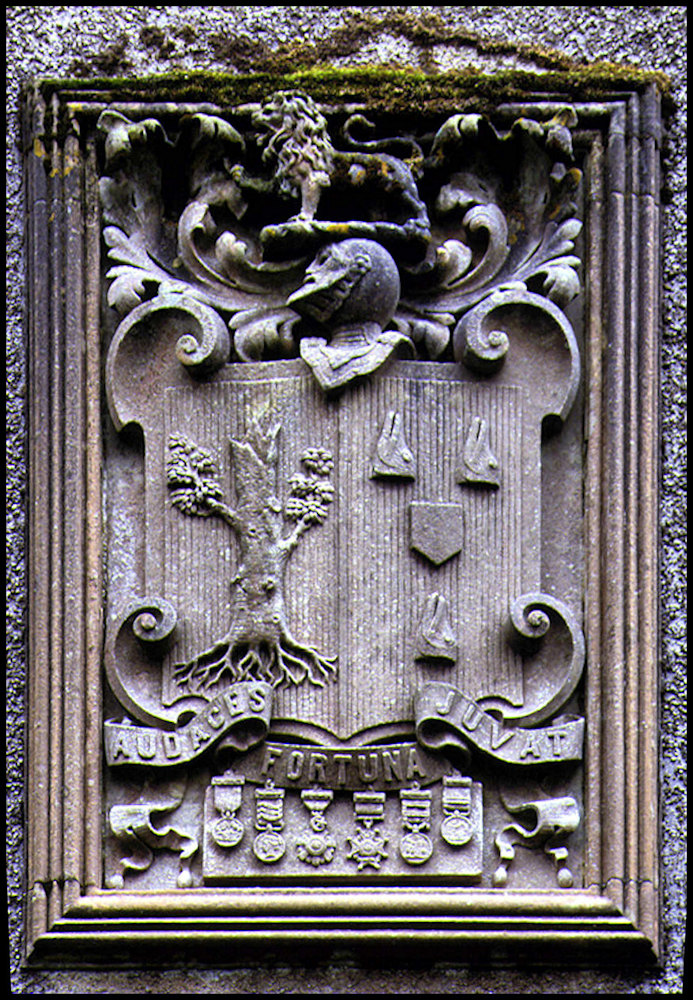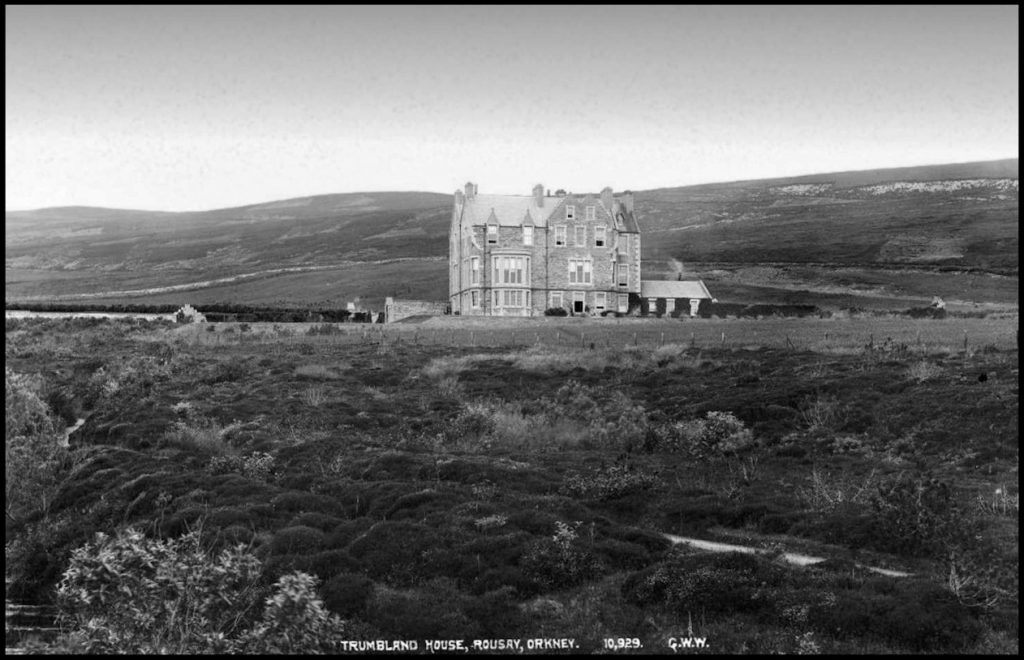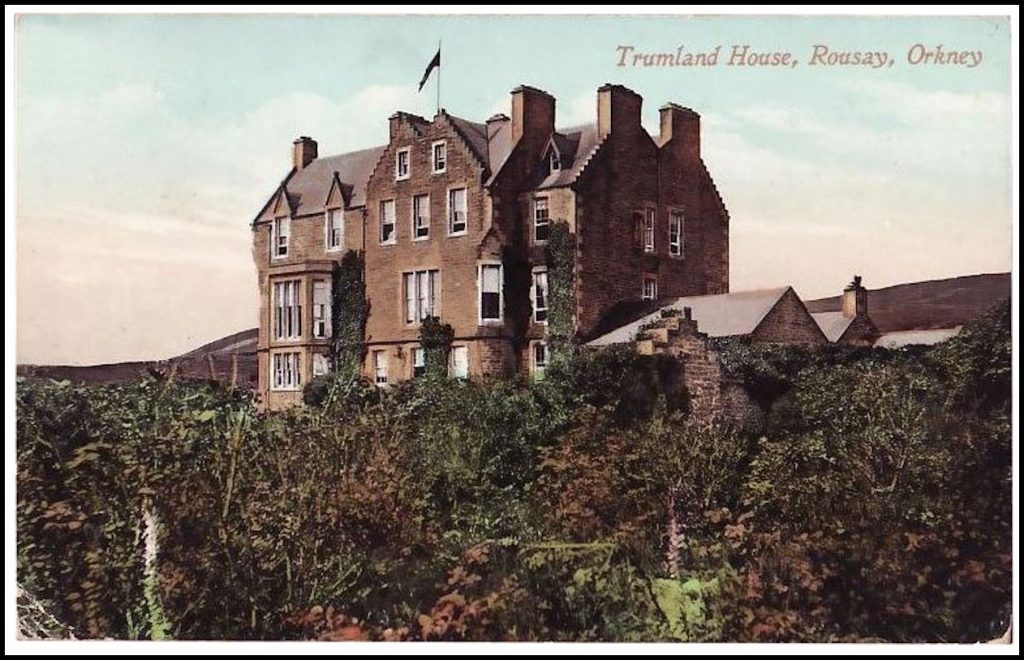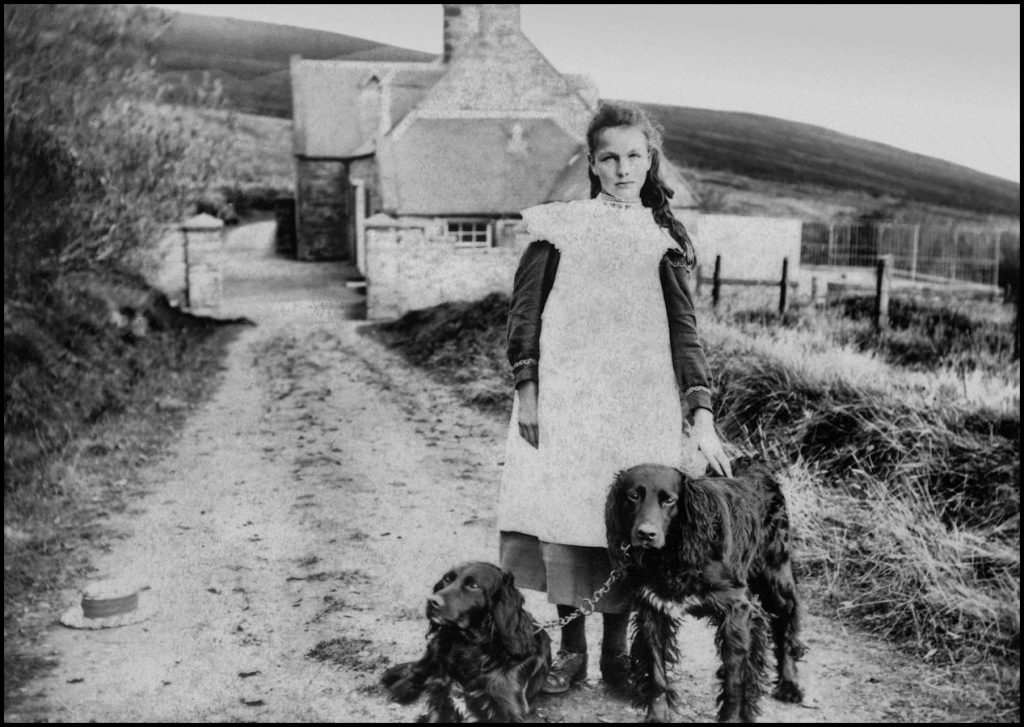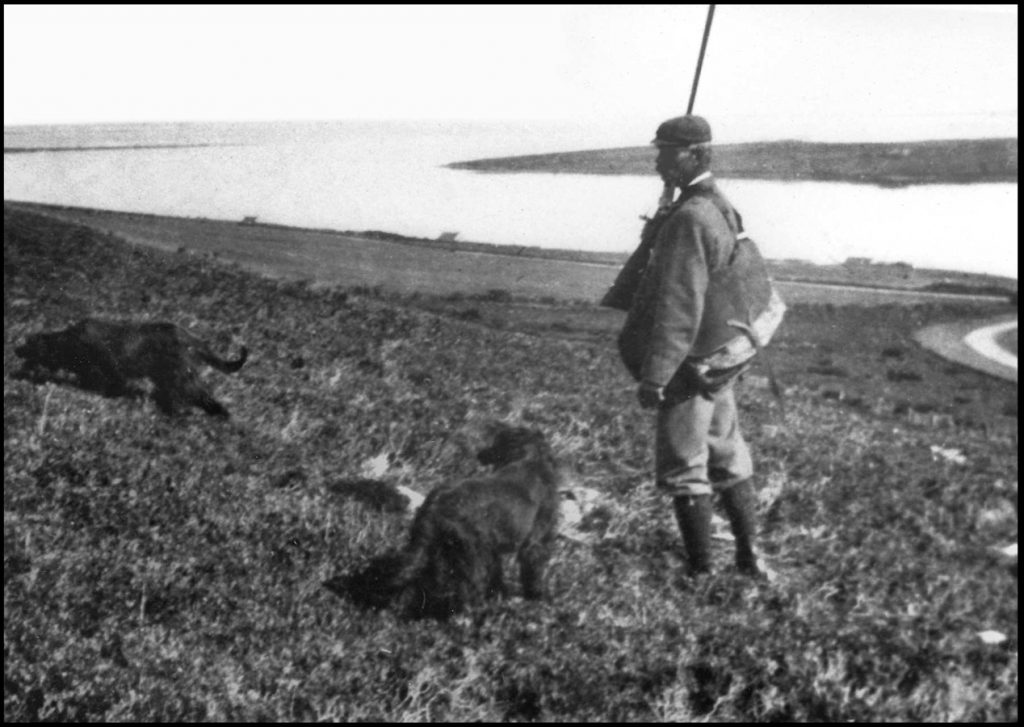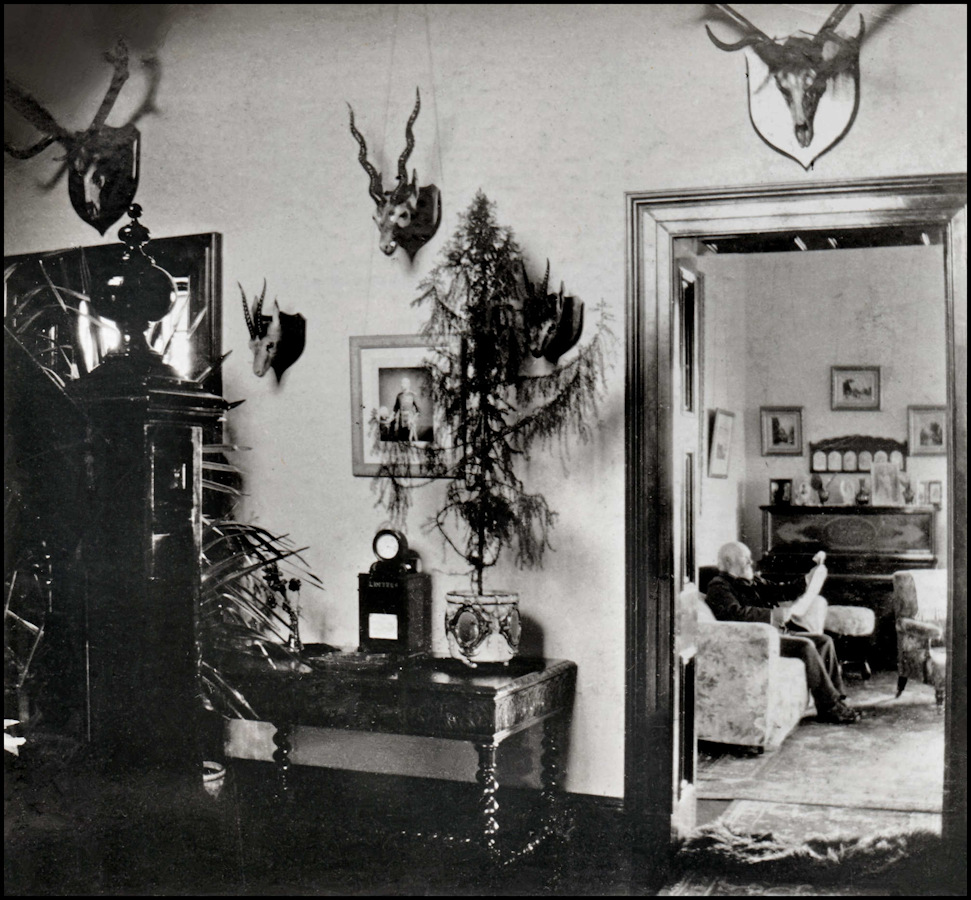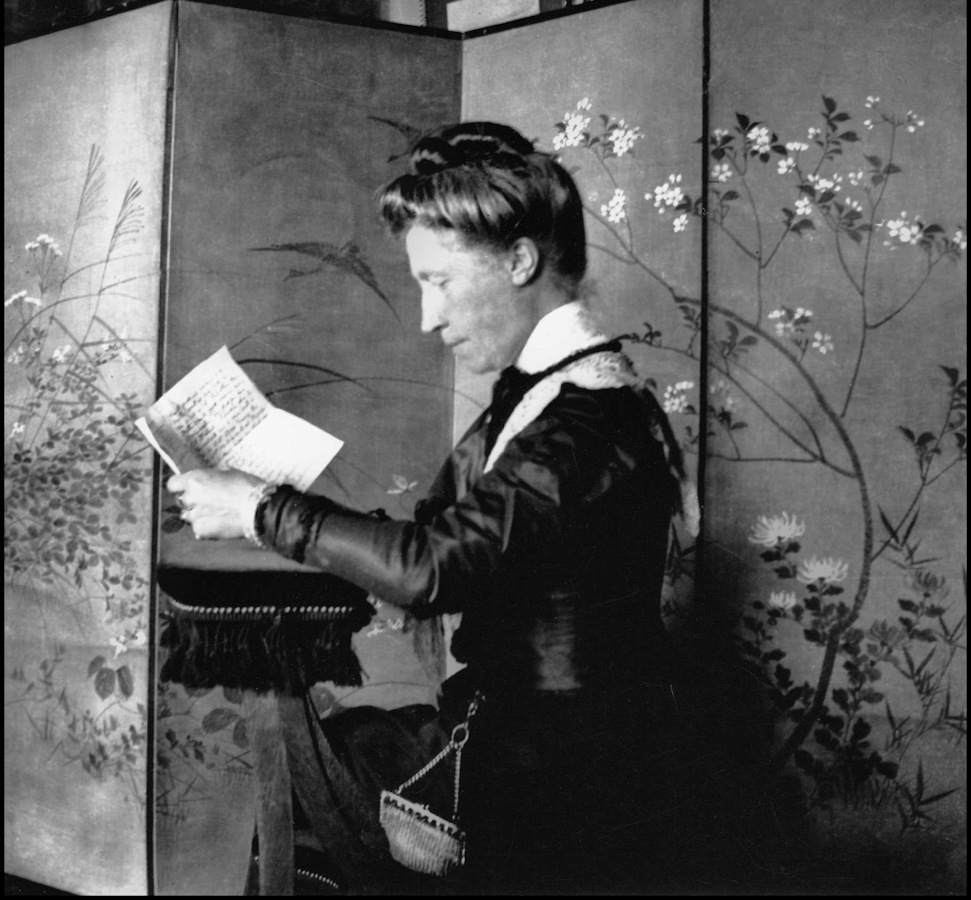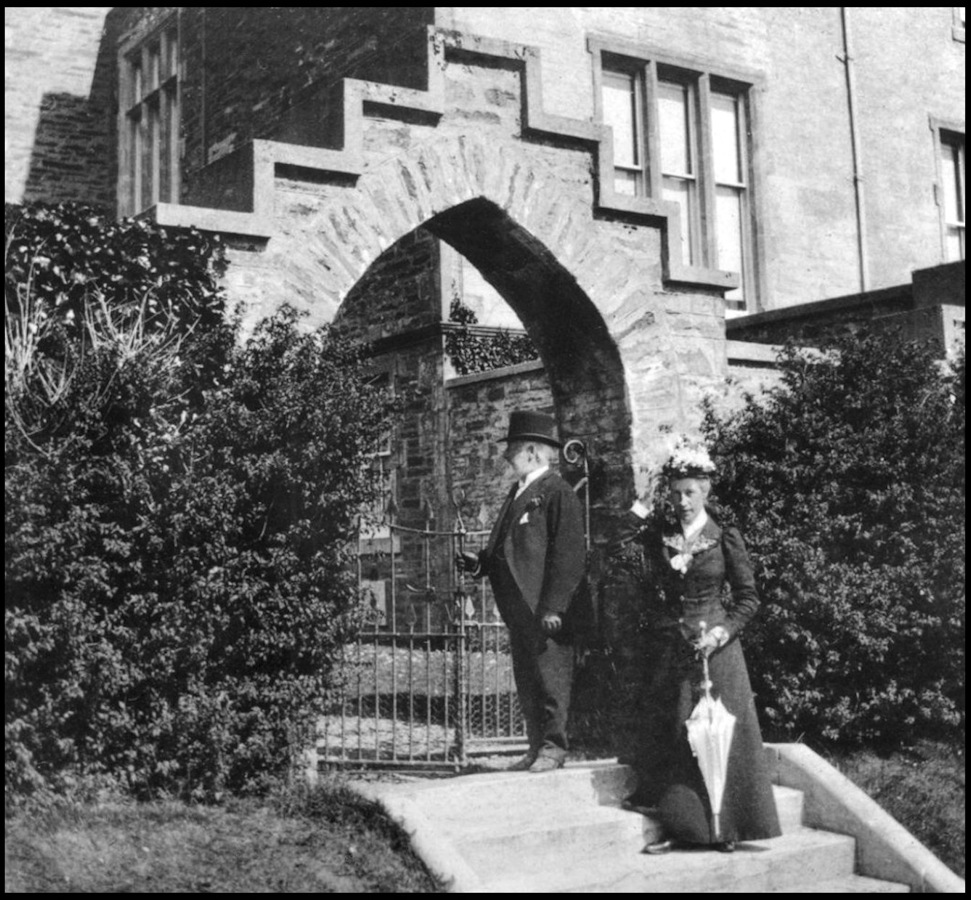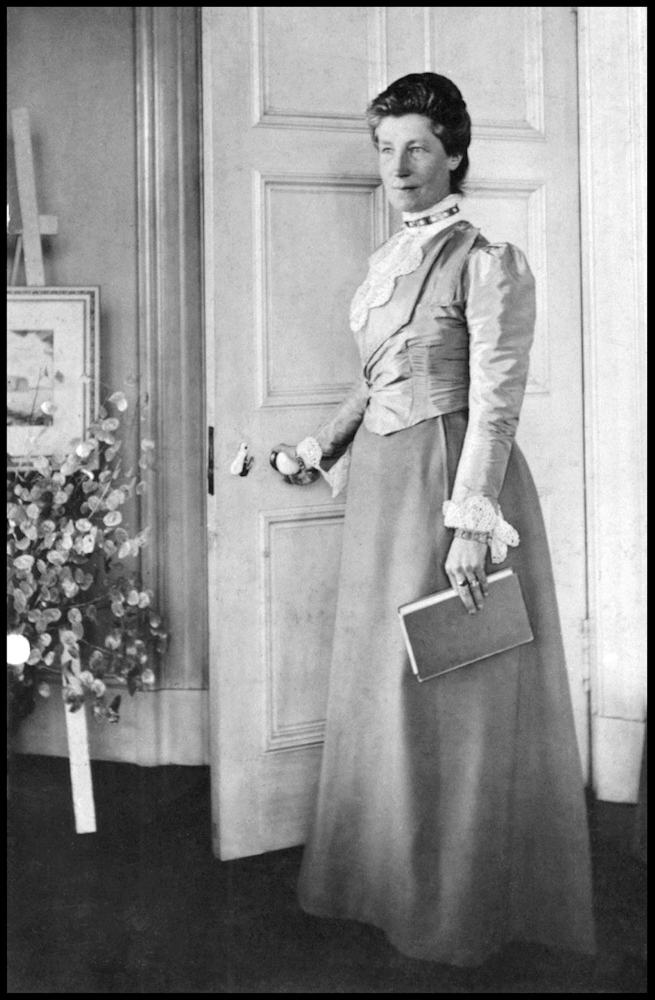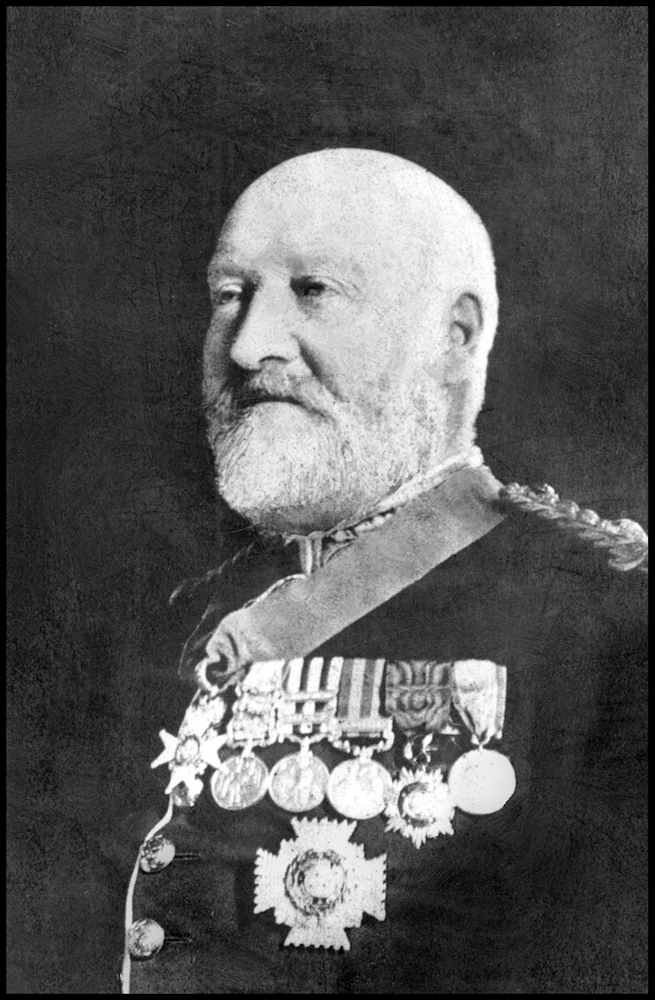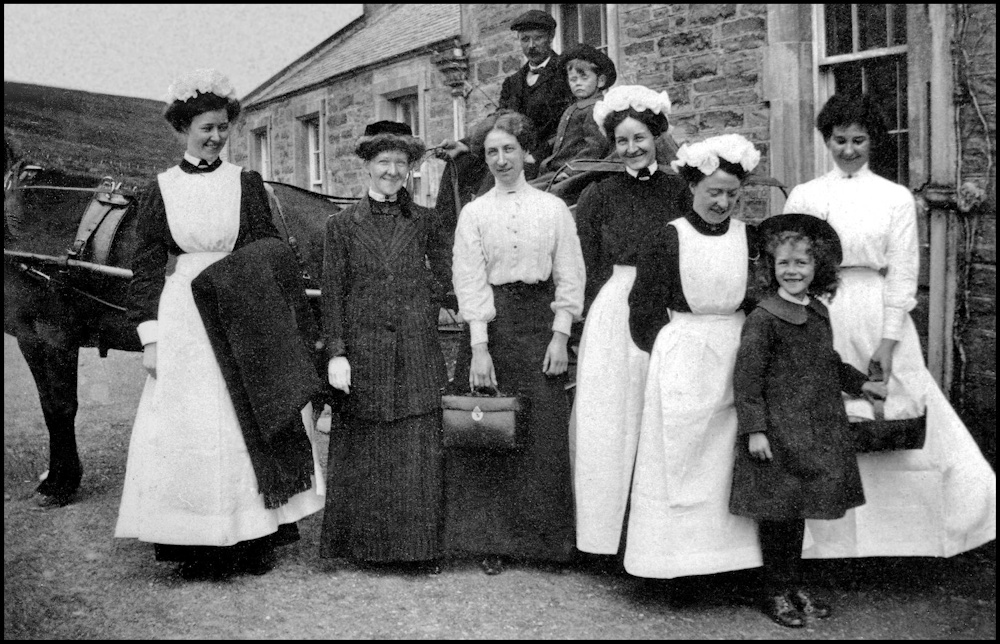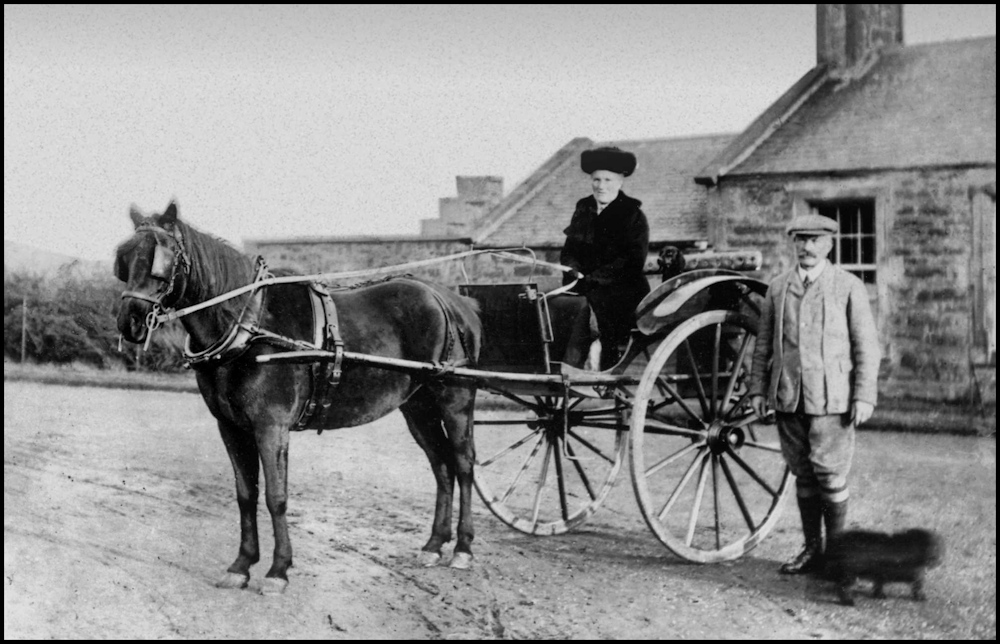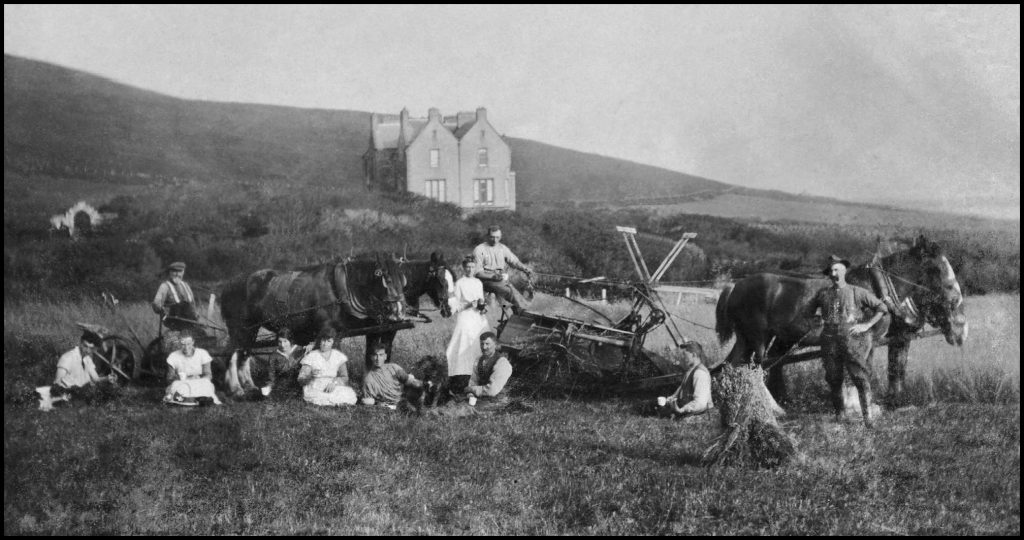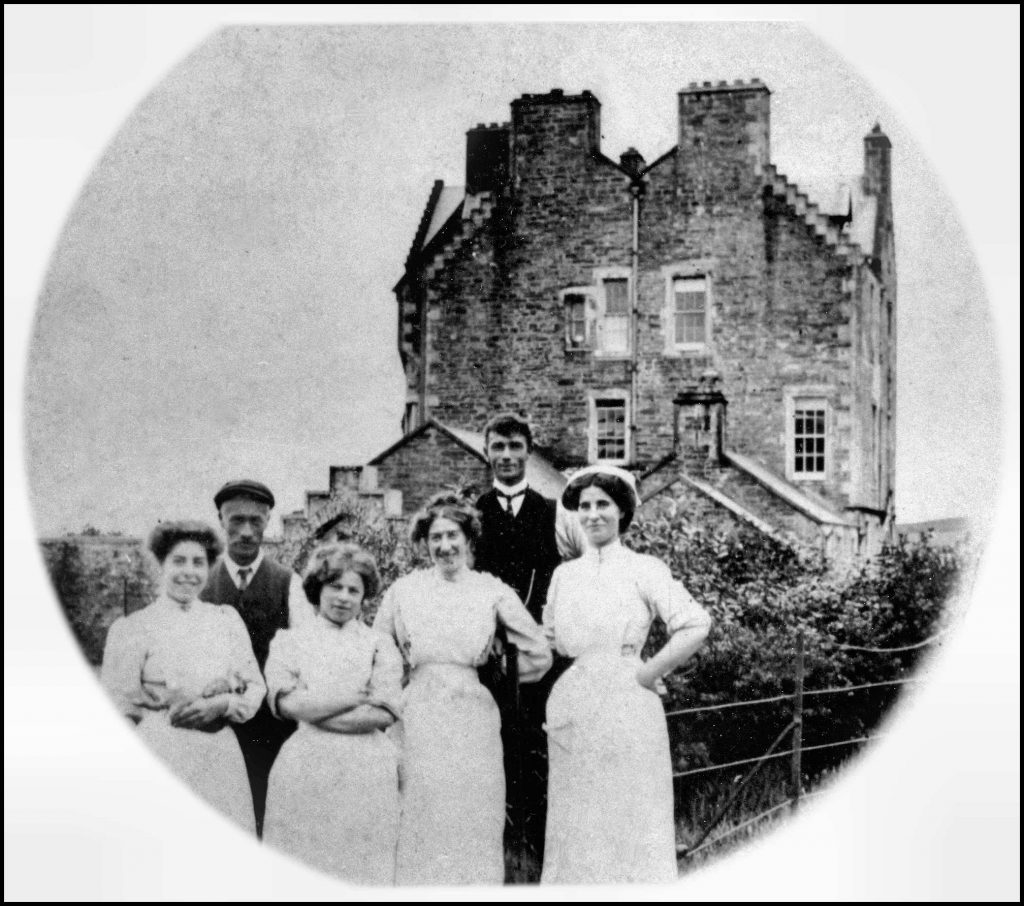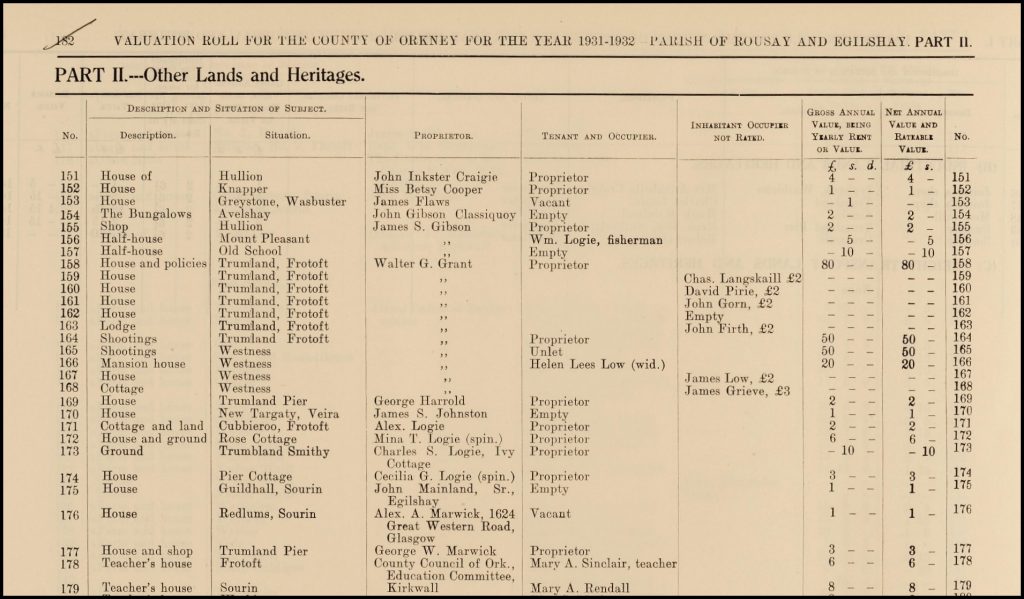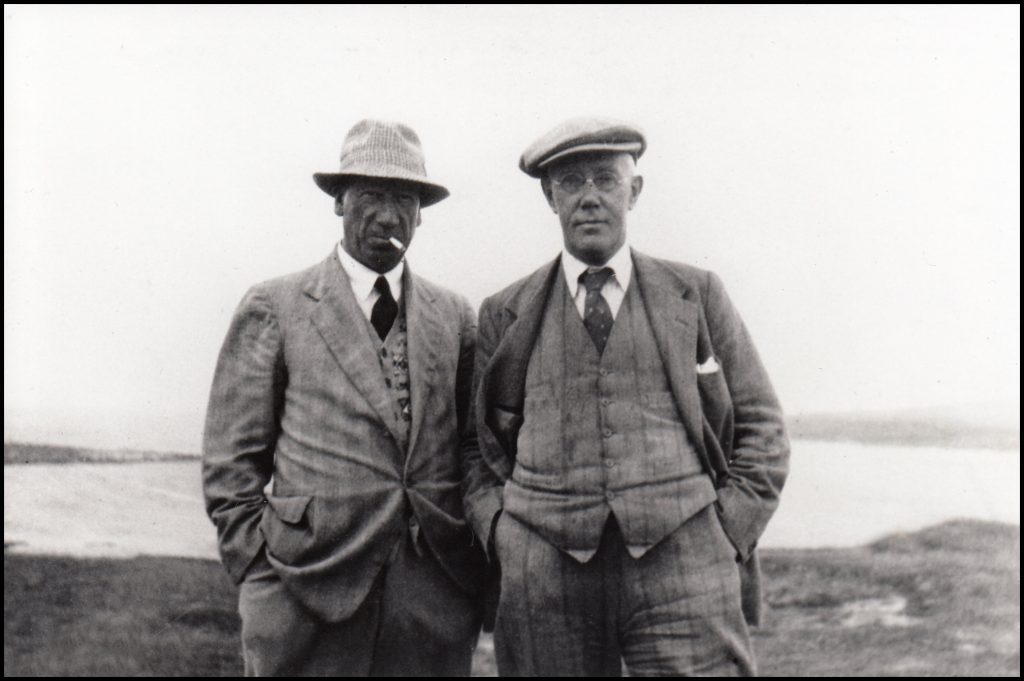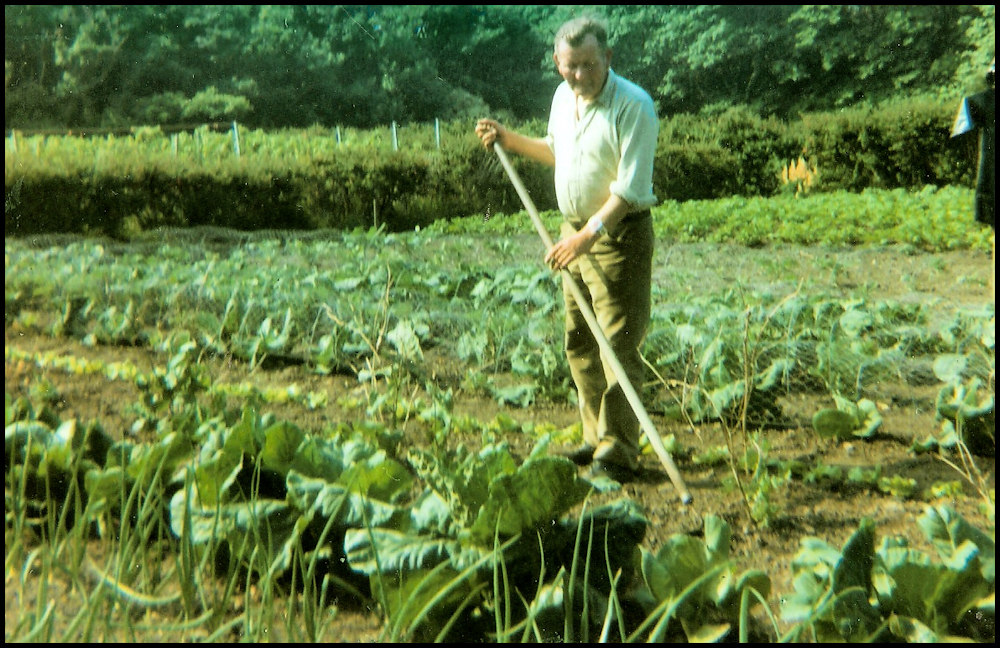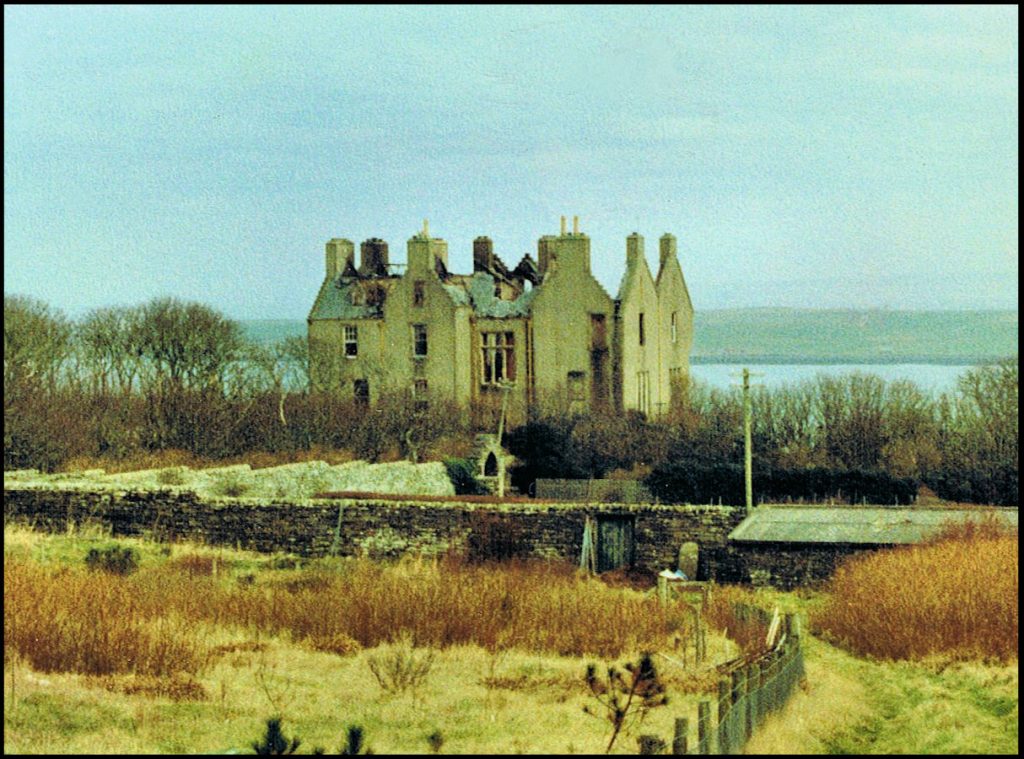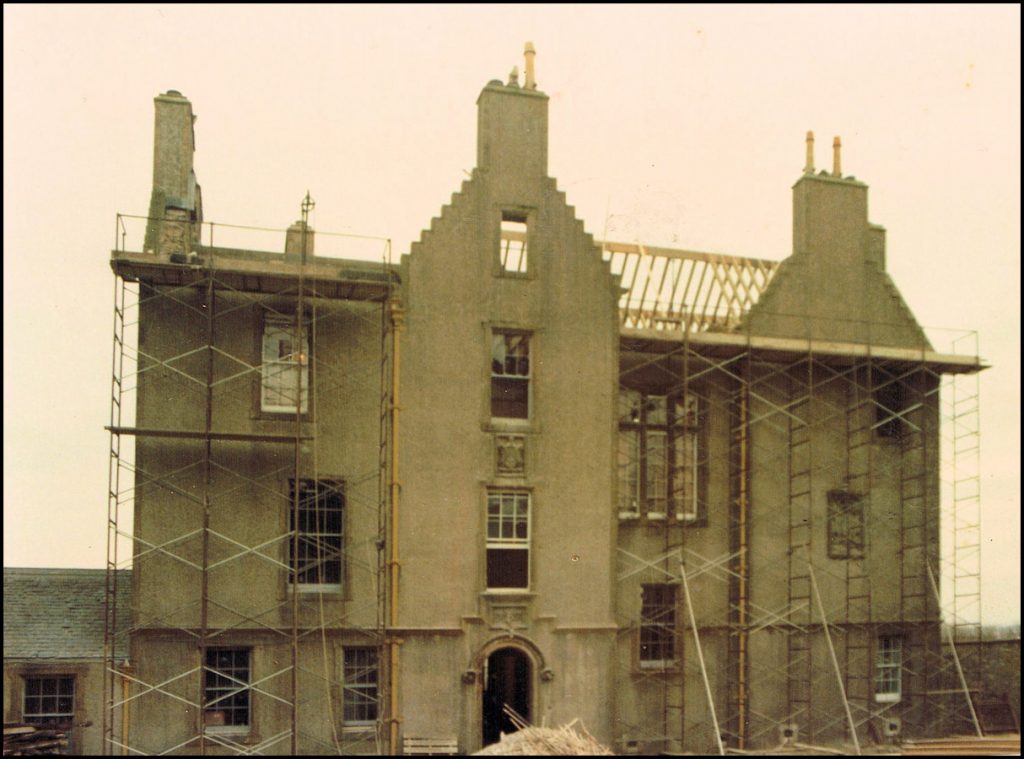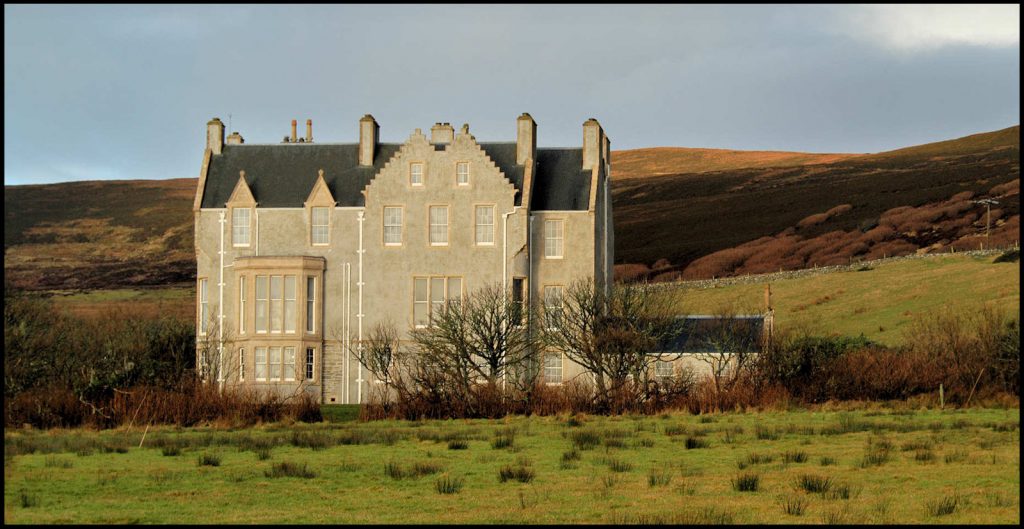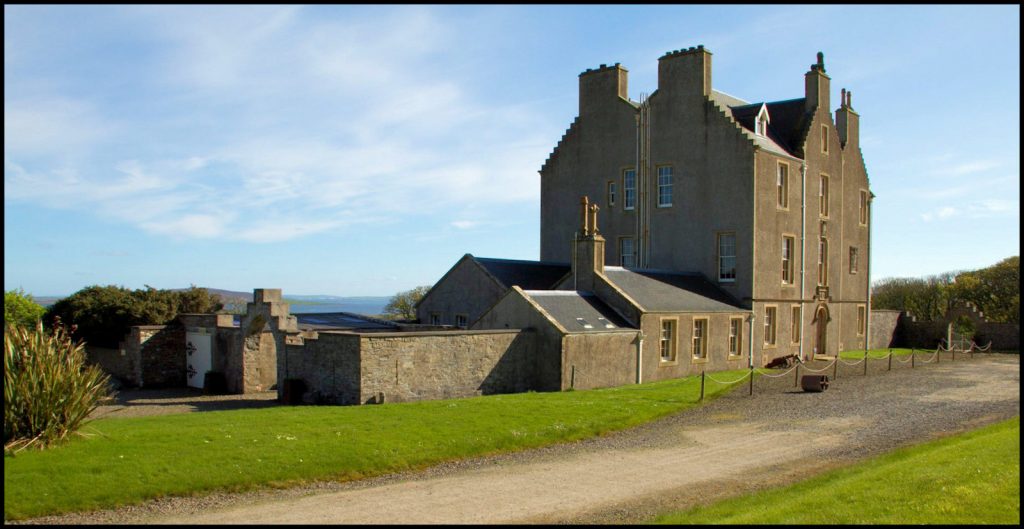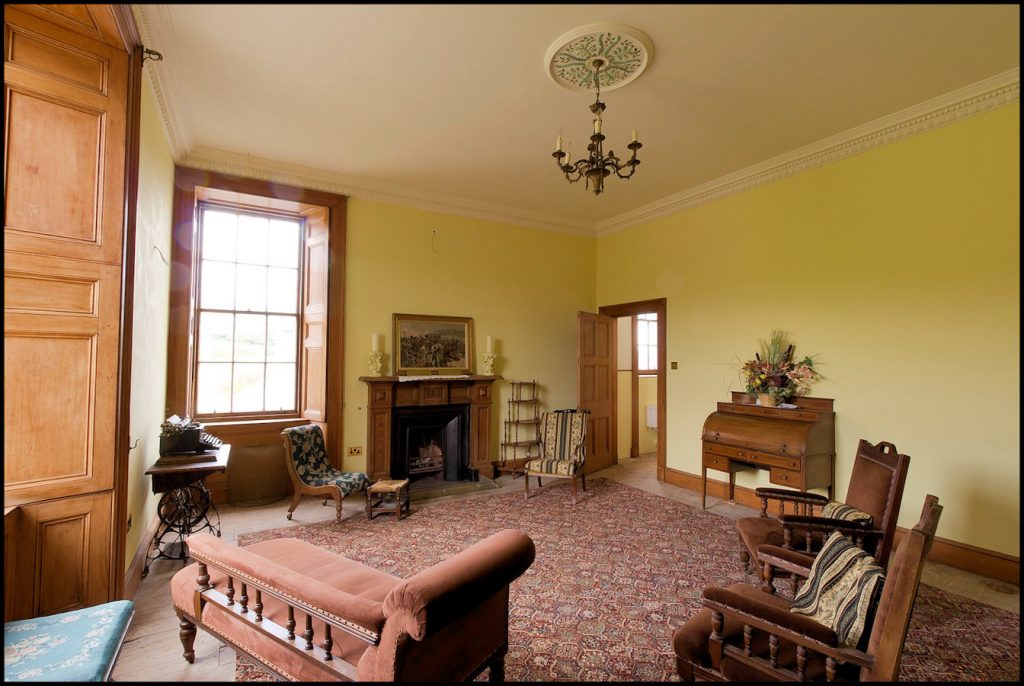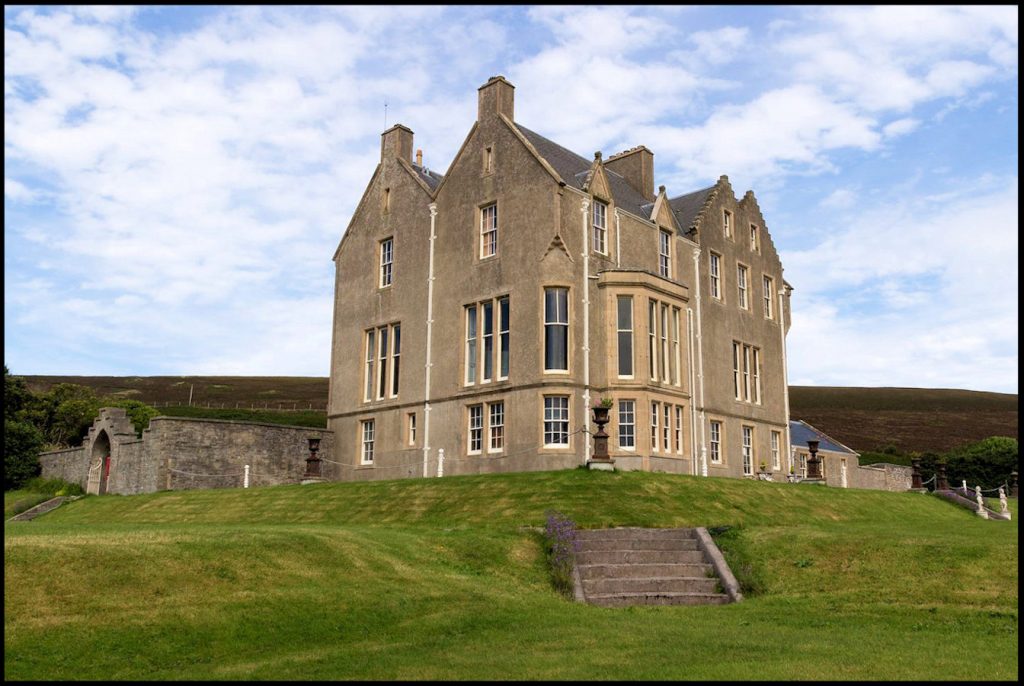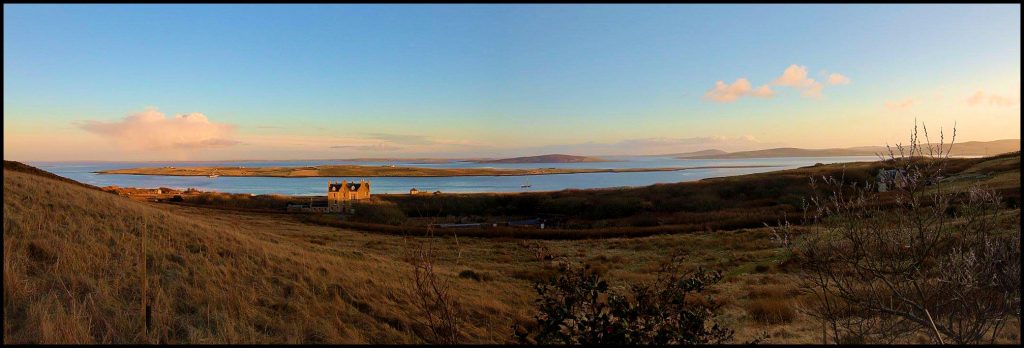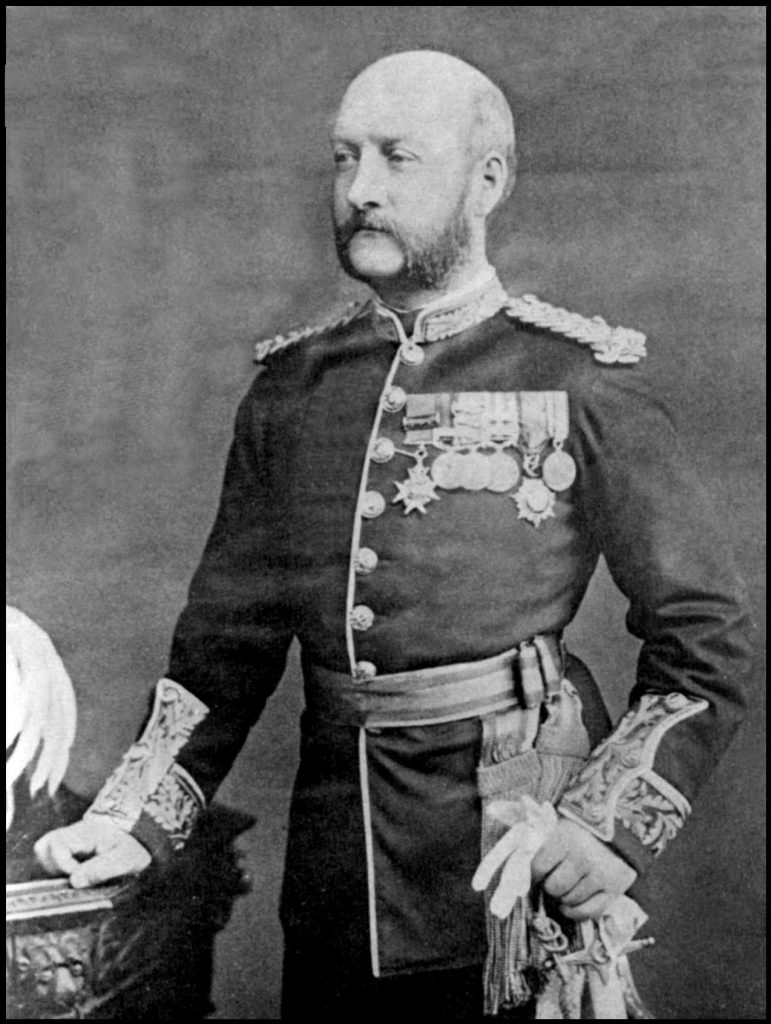
Frederick William Burroughs was sixteen years of age when he inherited the estate of Rousay and Viera on the death of his great-uncle, George William Traill, in 1847. It was at that time he assumed the name Traill, hence Frederick William Traill-Burroughs. He was the eldest son of Major-General Frederick William Burroughs, of the Bengal Army, and grandson of Sir William Burroughs, of Castle Bagshawe, Belturbet, County Cavan. Through his mother Caroline, the only daughter of Captain Charles Adolphus Marie de Peyron, of the 3rd Bengal Light Cavalry, he was the great-grandson of the Chevalier Charles Adrien de Peyron, who was killed in a duel in Paris in 1784 by Auguste Marie Raymond, Prince d’Arenberg, Comte de la Marck. He was educated at Kensington Grammar School, at Blackheath Grammar School, and at a select establishment managed by a German count at Hofwyl in Switzerland.
Burroughs was gazetted Ensign in the 93rd Sutherland Highlanders on the 31st March, 1848, being then just 17 years of age. On September 23rd 1851 he was promoted Lieutenant, he became Captain on November 10th 1854, and Major on July 20th 1858. He served with the Regiment in Bulgaria, and throughout the Crimean War, took part in the Battles of the Alma, Balaklava, in which battle he commanded the Left Centre Company of The Thin Red Line, and throughout the Siege of Sebastopol. He was present at the assaults of the 18th June and 8th September, 1855, and the fall of the Sebastopol. He also took part in the expeditions to and capture of Kertch and Yenikale.
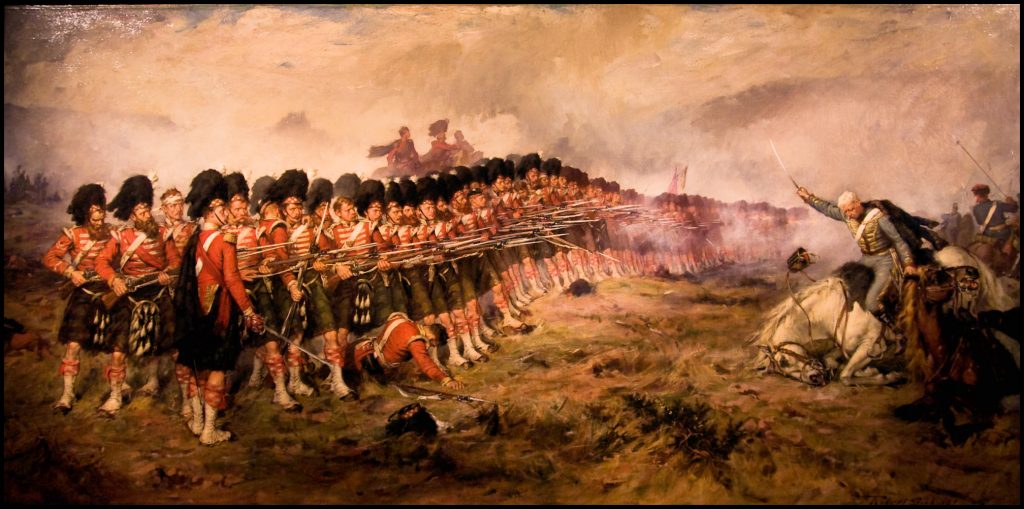
In an incident which became known as “The Thin Red Line”, a two-deep line of around 500
red-coated Scottish infantry from the Highland Brigade – with support from a battalion of
around 1,000 Turkish infantry and six guns of field artillery – stood firm against a force of
around 2,500 Russian cavalrymen.
[By Robert Gibb (1845-1932) (nms.ac.uk/) [Public domain], via Wikimedia Commons]
The Indian Mutiny campaign of 1857-58 again saw the 93rd Highlanders under their old chief, Colin Campbell, and Captain Burroughs had the fortune to serve with his regiment throughout all the fighting which preceded the relief and the final capture of Lucknow. He was the first, or one of the first through the breach at the storming of the Sikanderbagh, and with Lieutenant Gordon Alexander and some dozen men overpowered the gate guard. For this service, in which he received a deep tulwar [sabre] cut on the head, he was recommended for, but was not awarded, the Victoria Cross; but his conduct on this and other occasions, such as the battle of Cawnpore, the pursuit to Serai Ghat at the action of Khodagunge, the storming of the Begum Khotee, and, finally, the siege and capture of Lucknow (during which he sustained comminuted compound fractures of both bones below the knee in his right leg), was rewarded at the close of the campaign with the brevet of Major. The wounds he received in the Mutiny campaign disabled him for two years, and compelled him to return home – during which time he paid a visit to his Rousay estate and received the Freedom of the Borough of Kirkwall.
He rejoined his regiment in India in 1860, and in 1862, being then still a Captain and Brevet Major, succeeded to the temporary command of the 93rd, which lost two commanding officers within ten days of each other through an outbreak of cholera. He took the regiment over the River Indus below the fort of Attock [Punjab, Pakistan], after which there were no further cases of cholera. He was thanked for his services by the Governor General in Council. In that year he obtained his substantive majority, and two years later, being then in his 34th year, became Lieutenant-Colonel commanding the 93rd. Although he held the command of the regiment for nearly ten years, his only further active service was in the Umbeyla Pass in 1863-64, where he was again mentioned in despatches. He became a Colonel on August 10th 1869, and after going on half pay in 1873, commanded the 1st Brigade of the Orkney Artillery Volunteers till 1880 when he became Major-General, and retired in 1881 with the rank of Lieutenant-General.
Burroughs received numerous decorations for his military services. From the Sultan of the Ottoman Empire obtained the Order of the Medjidie of the 5th Class; he had the Crimea Medal, with clasps for Alma, Balaclava, and Sebastopol. He was also presented with the Indian Mutiny Medal, with clasps for the Capture and Relief of Lucknow. He was also awarded the India General Service Medal, with clasp for Umbeyla; the Turkish Crimea Medal 1855; and he was several times mentioned in despatches from the Crimea and India. He was awarded the Companionship (Military Division) of the Most Honourable Order of the Bath [CB] on May 24th 1873, and on Tuesday July 5th 1904 he was made Knight Commander (Military Division) of The Most Honourable Order of the Bath [KCB] in the Throne Room at Buckingham Palace, where he was dubbed by King Edward VII.
Now let us go back to 1870. Burroughs had already been laird of the estate of Rousay and Viera for twenty-three years, but he was virtually unknown to his tenants since these years had been spent in the army. In Edinburgh on June 4th 1870 he married Eliza D’Oyly, youngest daughter of Colonel William Geddes, C.B., Bengal Horse Artillery, and Emma, daughter of Edward D’Oyly, of Zion Hill, Yorkshire. The following month he and his new wife came to Rousay and Westness House, which they made their home. It was not too long before Mrs Burroughs found the house unsuitable and suggested to her husband the building of a larger and more imposing mansion – somewhere more salubrious to entertain family and friends. They employed Edinburgh architect David Bryce, who promised to build ‘a very compact, complete and nice looking house’ for less than £3000.
The work of building Trumland House started in 1873. Such a house with its surrounding offices – coach house, kennels, joiner’s shop, stables and game-keeper’s house – could not have been cheap and indeed turned out to be a good deal more expensive than Burroughs had expected. Plans for a tower were, perhaps fortunately, abandoned as was the west entrance with its second lodge. Even after these economies the eventual cost of the house, grounds and furnishings was £11,887, a figure which contrasts sharply with the price of a cottar house which could be erected for less than £5.
The impressive Coat of Arms above and to the right of the main door of Trumland House is an amalgamation of the Burroughs and Geddes family heraldic arms.
On the left of the display is a version of the Burroughs of Castle Bagshaw, County Cavan, arms, depicting the blasted trunk of an old oak tree, eradicated, [meaning its roots are visible]. To the right are the arms of the Geddes family, an escutcheon Argent between three pike-heads, or ‘gedds’ heads – it having been suggested that the surname was a patronymic created from the personal name Geddie, which may come from the Scots dialect word ‘gedd’, meaning ‘pike’.
Below is the old Burroughs motto:- Audaces Fortuna Juvat – Fortune Favours the Bold. Below that are Burroughs’ war medals – details of which are as follows:-
1 Turkish Crimea Medal 1855
2 Crimea Medal 1854-55, three clasps – ‘Alma’, ‘Balaklava’, ‘Sebastopol’.
3 Turkish/Ottoman Order of the Medjidie, 5th class
4 CB – Companion of the Military Division of the Most Honourable Order of the Bath 1873
5 Indian Mutiny Medal 1857-58, two clasps – ‘Relief of Lucknow’, ‘Lucknow’
6 India General Service Medal 1863-64, one clasp – ‘Umbeyla’
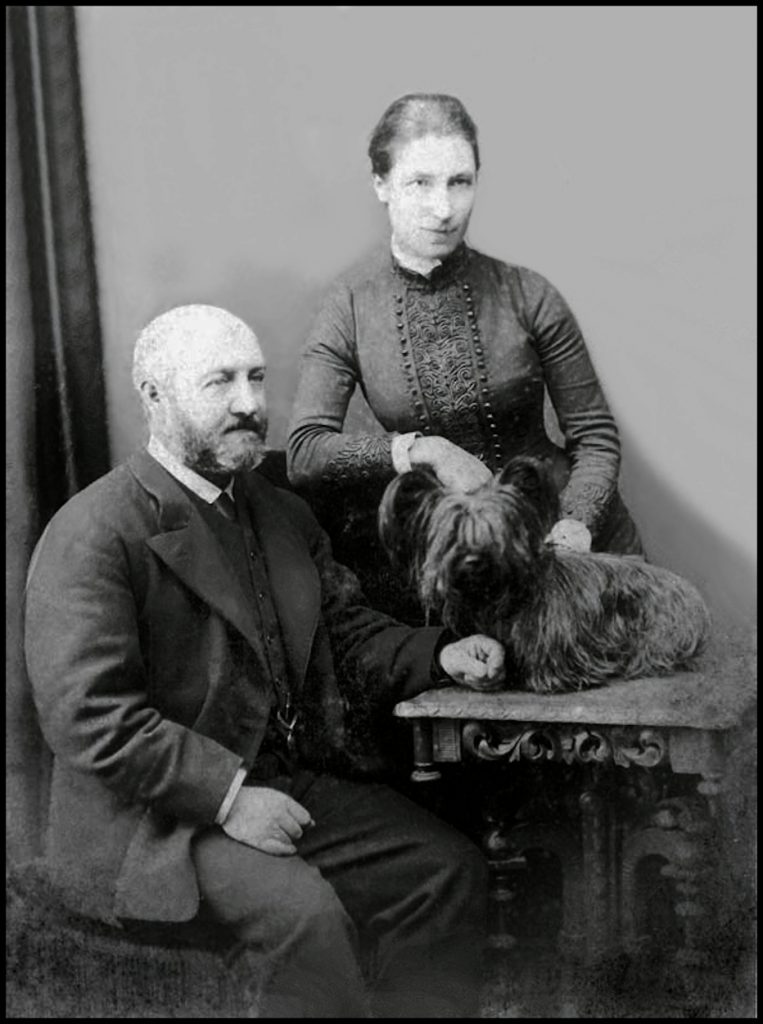
The schoolchildren of Rousay eagerly looked forward to the annual picnic, which had always been held at Westness House. Now the laird was in residence at Trumland that was the new venue for the picnics. A report in The Orcadian of August 1876 stated that 75 pupils from Sourin, 54 from Frotoft, 39 from Wasbister, and 18 from Wyre gathered at Trumland on a day of torrential rain. The Sourin contingent carried bannerettes, putting the others in the shade! On these happy occasions the General and Mrs Burroughs, along with any house guests of the time, led the children through a programme of games and races followed by tea on the lawns. At the end of an enjoyable afternoon the children were sent home with a paper poke of goodies and a small gift which sometimes consisted of nothing more than a picture cut from a magazine.
The census of 1881 informs us fifty-year-old General Frederick William Traill-Burroughs, Deputy Lieutenant, Companion of the Order of the Bath, and Justice of the Peace, and his 30-year-old wife Eliza D’Oyly Geddes, were in residence at Trumland House. The butler was 24-year-old John Logie, and the cook was 37-year-old Betsy Robertson; Elizabeth Copeland was a 28-year-old housemaid; Margaret Rendall was a 42-year-old laundry-maid; and Anne Gibson was a 19-year-old under-housemaid – all of whom were unmarried.
Living at Trumland Lodge at this time was a 39-year-old general labourer and foreman Alexander Munro, his 36-year-old wife Christina, and their two young daughters, two-year-old Malcolmina and 9-month-old Agnes. Alexander and Christina were born at Bower, between Thurso and Wick in Caithness. They had a boarder staying with them, 32-year-old John Geddes, a blacksmith and wire fencer, and a visitor named George Munro, a 44-year-old unemployed forester, both from Bower.
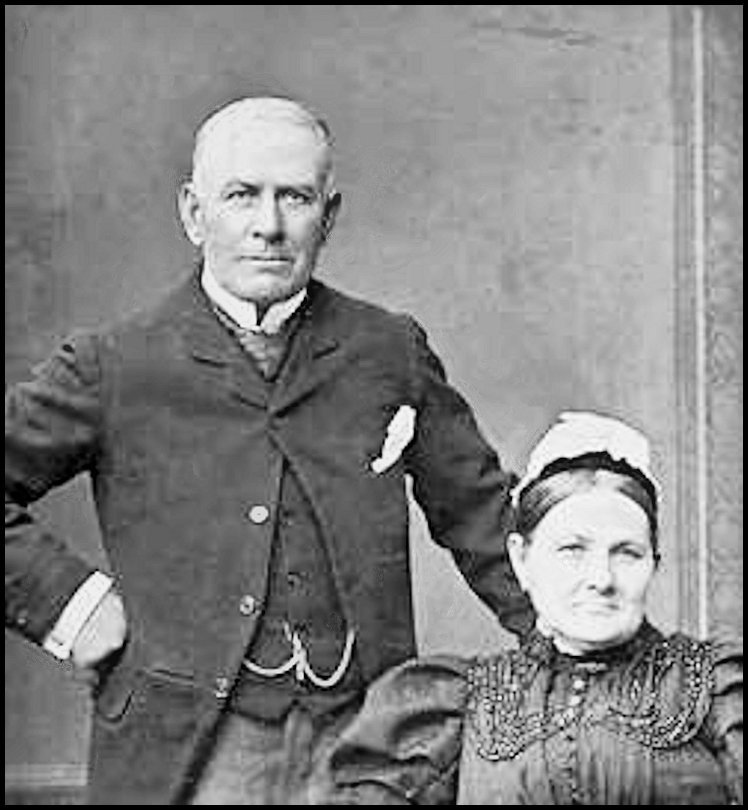
Also living at Trumland was 42-year-old Alexander Auld, who was the coachman. Under the same roof was his 40-year-old wife and their eight children. Catherine Auld, like her husband, was born in Wick, as was their first child, John, now a 17-year-old apprentice gardener; their five other children were Elizabeth, James, Catherine, Alexander, and Ellen, whose ages ranged from 15 down to 7 years, all born at Bower near Wick, and all of whom were scholars. There were two other youngsters, George (3) and two-year-old Maggie.
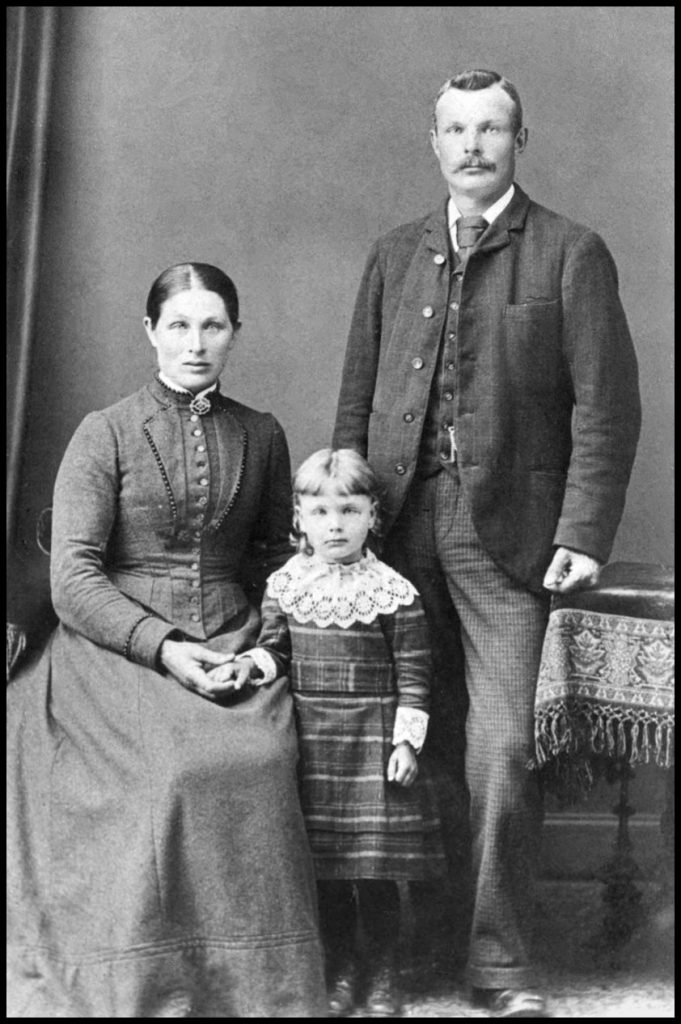
Then there was the gamekeeper. He was 31-year-old Robert M. Murrison, who was born at Monymusk, west of Aberdeen. With him was his wife Maggie, who was 23 years old and from Inverness, and their 6-month-old son Alexander William.
In 1891 there were two families living at Trumland Cottage. William Logie was then a 30-year-old gamekeeper but he later became General Burroughs’ yacht-master. He was the son of John Logie and Cecilia Gibson of Geo, Westness. His wife was Helen Marwick, the daughter of William Marwick and Helen Grieve of Hanover and she was born in 1854, and they had one child, a daughter christened Cecilia, who was born in 1890.
Gamekeeper William Logie, his wife Helen, and young
daughter Cecilia – or Cilla as she was known
The Burroughs’ at home – Reading a newspaper, writing a letter, with a visiting group
of tenants and children, and strolling in the graden.
I will not dwell on the conflict between the laird and the Rousay crofters, for the subject has been covered in minute detail within the Rousay in Newsprint pages elsewhere on this site. Burroughs set about disposing of his estate but couldn’t find any buyers so he resigned himself to remaining on the island. Despite the bitterness caused by the Crofters Commission findings he did find honours in old age. In 1889 he was returned unopposed as Rousay’s first County Councillor, and he re-appeared on the School Board. He was made honorary colonel of the Warwickshire Regiment, and of his own regiment [which had been amalgamated to form the Argyll and Sutherland Highlanders]. He was appointed a Vice-Lieutenant of Orkney and Shetland on January 17th 1900, and he received a knighthood in 1904, which he saw as a recompense for his failure to win the Victoria Cross at Lucknow. The photo above shows Sir Frederick with his war medals, the CB hanging from the neck ribbon, and the KCB breast star pinned below.
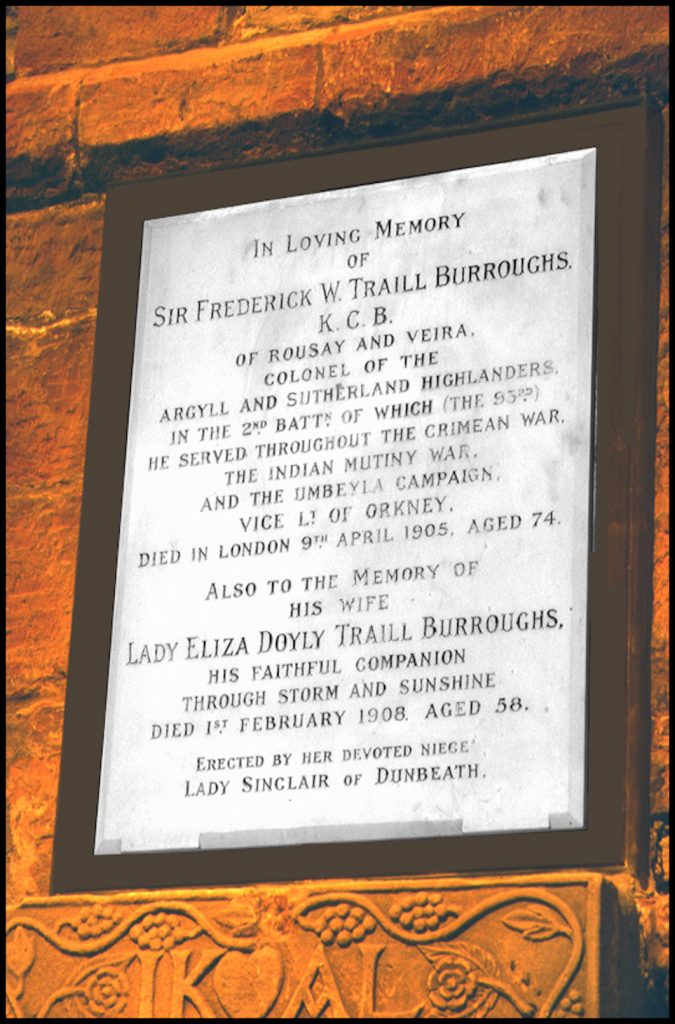
When the 1901 census was carried out on April 6th Frederick and Lizzie were living in their London residence – 87 Ecclestone Square, in the Borough of Westminster. Faithful butler John Logie was on hand, as was his wife Annie, who was the cook, and Bella Mainland [31], who was the housemaid. She was the daughter of John Mainland and Lydia Mowat, Langstane.
Frederick William Traill-Burroughs died in London on April 9th 1905 and was interred in the vault of the late George William Traill of Rousay and Viera in Brompton Cemetery in the Royal Borough of Kensington and Chelsea. His wife passed away on February 1st 1908.
A memorial commemorating the lives of both husband and wife was erected in St Magnus Cathedral, Kirkwall, by Lady Edith Marion D’Oyly Dunbar or Sinclair, wife of Sir John Rose George Sinclair, 7th Baronet of Dunbeath, Barroch House, Wick, and executrix of Lizzie’s will.

This superb photograph, with Trumland House in the background, is almost certainly by John Logie. Fred Inkster, hands on hips on the right, was tenant of Trumland Home Farm in the early 1900s, and during this particular harvest he had the assistance of his father Hugh, seated behind the horses to the left, to get the crop in. All the farm workers have their pieces and if you look closely, cups of tea – for the lady in the centre has just filled them from her teapot!
Trumland House was in the hands of the Traill-Burroughs family trustees until 1922 when it was purchased by the Grant family of Highland Distilleries/Highland Park whisky distilling fame, and was used as the summer residence for Mr Walter G Grant, a director James Grant & Co and a board member of Highland Distilleries Co Ltd. Christened Walter Gordon, he was the son of distiller James Grant and Helen McIntosh, and born in Elgin, Moray, in 1886. He lived at Hillhead, St Ola, just south of the Highland Park distillery, and on October 26th 1911 he married Florence Davidson of Viewforth, Kirkwall, daughter of shipping agent Charles Davidson and Mary Dickson Cowan Bain, who was fifteen years his senior.
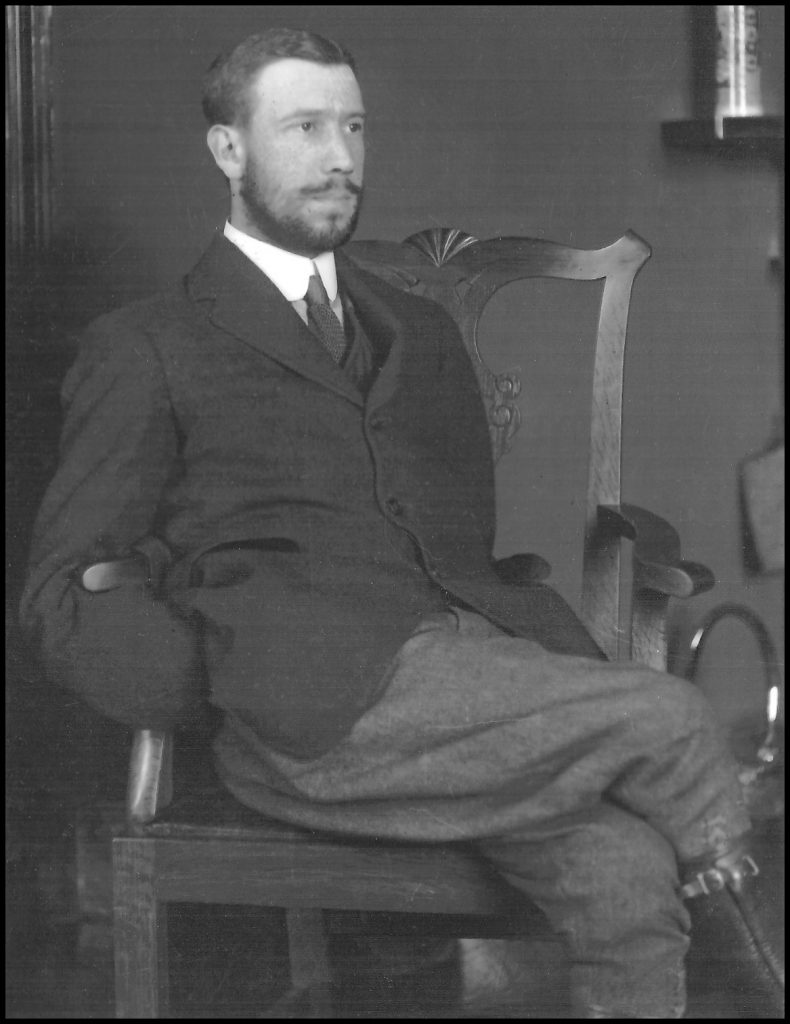
Walter Grant’s involvement in local affairs is illustrated by his work as president of the Orkney Trout Fishing Association, and his assistance with the introduction of an airmail service to and from Orkney. Captain Ted Fresson’s Highland Airways began the first scheduled flights in the Highlands between Inverness, Wick and Kirkwall in 1933. After 12 months of successful operations the company was awarded a contract by the Royal Mail to begin an airmail service between Inverness and Kirkwall. This was Britain’s first internal scheduled airmail service at normal postal rates and it commenced on 29 May 1934.
Walter G. Grant was regarded as one of the greatest patrons of the archaeology of Orkney and Scotland, having funded some of the most important digs and research sites across the country. He was prompted by the work carried out at Skara Brae by Professor Vere Gordon Childe and after initial sites were unearthed he undertook what was to be his greatest archaeological achievement – the excavation of the broch of Midhowe on Rousay’s Westside.
A young Walter G Grant – and below, details of Trumland House and policies on the 1931-32 valuation roll
Walter Grant’s involvement in local affairs is illustrated by his work as president of the Orkney Trout Fishing Association, and his assistance with the introduction of an airmail service to and from Orkney. Captain Ted Fresson’s Highland Airways began the first scheduled flights in the Highlands between Inverness, Wick and Kirkwall in 1933. After 12 months of successful operations the company was awarded a contract by the Royal Mail to begin an airmail service between Inverness and Kirkwall. This was Britain’s first internal scheduled airmail service at normal postal rates and it commenced on 29 May 1934.
Walter G. Grant was regarded as one of the greatest patrons of the archaeology of Orkney and Scotland, having funded some of the most important digs and research sites across the country. He was prompted by the work carried out at Skara Brae by Professor Vere Gordon Childe and after initial sites were unearthed he undertook what was to be his greatest archaeological achievement – the excavation of the broch of Midhowe on Rousay’s Westside.
With Dr J Graham Callander, director of the National Museum of Antiquities of Scotland, giving personal supervision during the summer months, work continued from 1930 to 1933. In a paper written in 1934 it was stated that ‘The time taken to excavate the broch lasted for five consecutive summers and a few winter months and practically the whole work of cleaning out the structures was done by Mr James K Yorston. It has been computed that he wheeled out from 1500 to 2000 tons of fallen stones and debris.’
The excavation aroused a considerable amount of interest and acclaim. In an Office of Works minute, dated November 5th 1933, Mr James Richardson of HM Office of Works wrote, ‘…..not only has Yorston cleared the interior of the broch and excavated the labyrinth of secondary buildings between the outer rampart and the main tower, but he has also consolidated part of the structure in a sympathetic manner quite equal to the best of our own work. Mr Grant has spent a very considerable sum on the undertaking and he has also borne the expense of having the monument carefully surveyed.’
Callander, writing in The Scotsman, dated April 13th 1933, stated: ‘It is many years since an excavation on such a large scale as this has been attempted of a prehistoric site in Scotland by a private individual and so Mr Grant has earned the cordial thanks of all interested in Scottish archaeology. He and his assistant Mr J Yorston are to be heartily congratulated on the patience and skill displayed in their work… .’
Grant was elected a Fellow of the Society of Antiquaries of Scotland in 1930, and in the ensuing years carried out excavations on many of the monuments on Rousay. He enlisted the help of Callander for a number of excavations, in addition to that at Midhowe broch, notably the chambered cairns at Midhowe, Knowe of Yarso, Knowe of Ramsay and Blackhammer. J Hewat Craw, who was working at the Broch of Gurness, Aikerness, on the opposite side of Eynhallow Sound between 1930 and 1933, was invited across to excavate at Midhowe chambered cairn. An excellent draughtsman, David Wilson, was employed by Grant, and invaluable assistance was given by Mr J K Yorston and his son from the Trumland estate.
Following Grant’s death the property was occupied by a Mr Dolby, until 1966 when Major Rio Ritchie was in residence until his demise in 1979. Trumland House was undergoing renovation by a subsequent owner but disaster struck on April 4th 1985 when a fire caused considerable damage, leaving the property roofless and with the upper floors and principal rooms seriously damaged or destroyed. The fire started with a workman leaving a hot blow torch (turned off) on a very dry beam as they went for lunch, and it wasn’t long before the flames took hold. Much of the damage to the house was caused by water, as the huge thick doors on the upper floor kept the fire at bay. The smoke was visible from all parts of the island, and many residents hurried to the house and formed a human chain, saving valuable furniture and paintings from destruction. After re-roofing the house was again sold, and passed un-restored through a series of owners until purchased by the present owners in 2002, who are now in the process of returning the house and gardens to its previous form – and the photos below show just that.
[Details of FWT-B’s war service record were taken from his obituary, published in the 93rd
Sutherland Highlanders regimental newspaper The Thin Red Line and the Orkney Herald.
Other extracts within the text have been reproduced by permission of Birlinn Ltd.
Reference was made to the following publication regarding Walter Gordon Grant:-
Walter Gordon Grant: an archaeological appreciation written by Diana M Reynolds
and J N Graham Ritchie and published in Proc Soc Antiq Scot, 115 (1985), 67-73,
available at Orkney Library & Archive.
Photo credits: Orkney Library & Archive; Tommy Gibson; Brian Halcro;
and the present owners of the Trumland Estate.]
